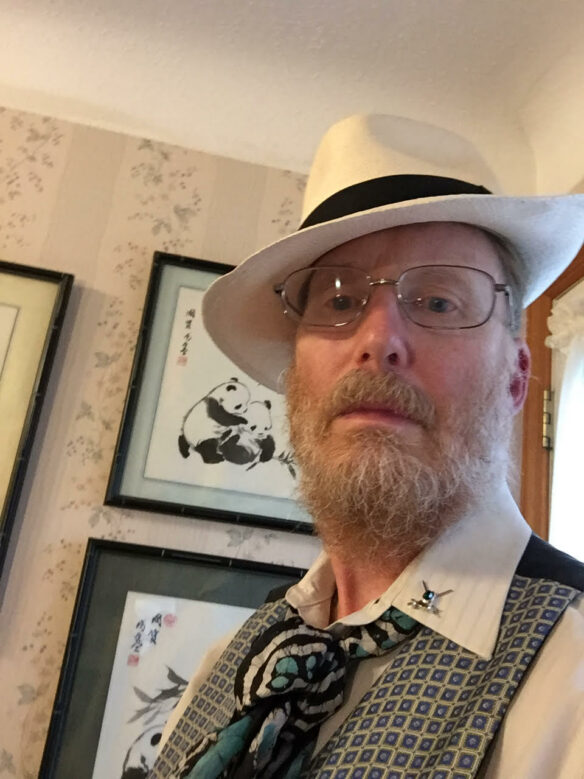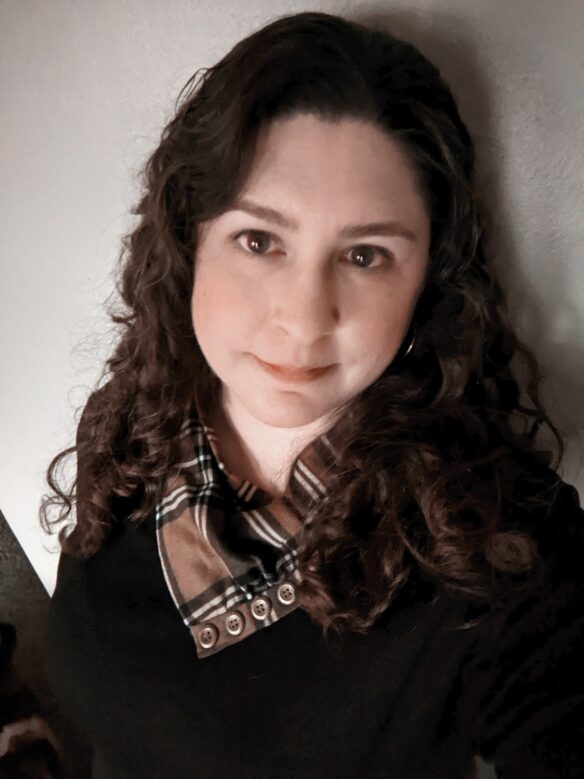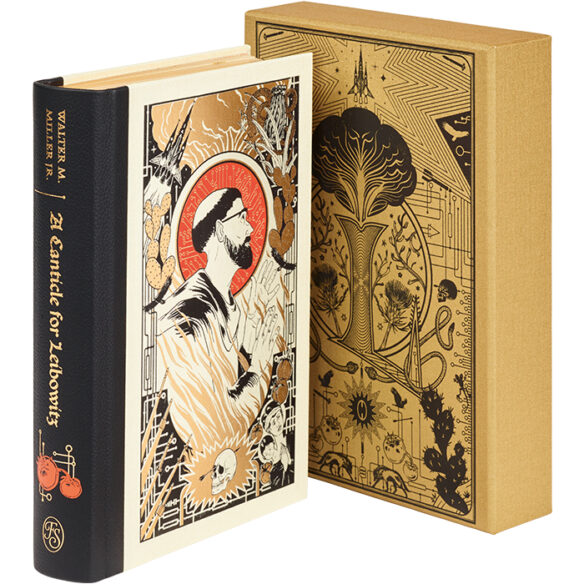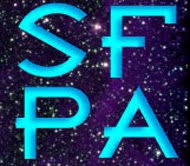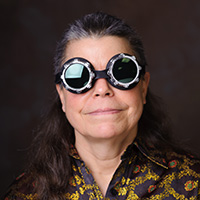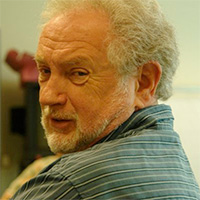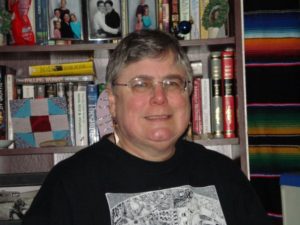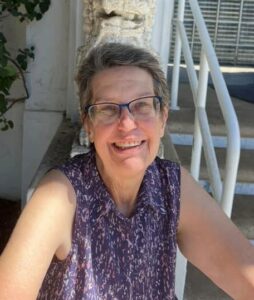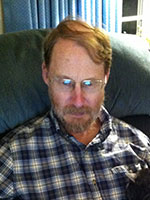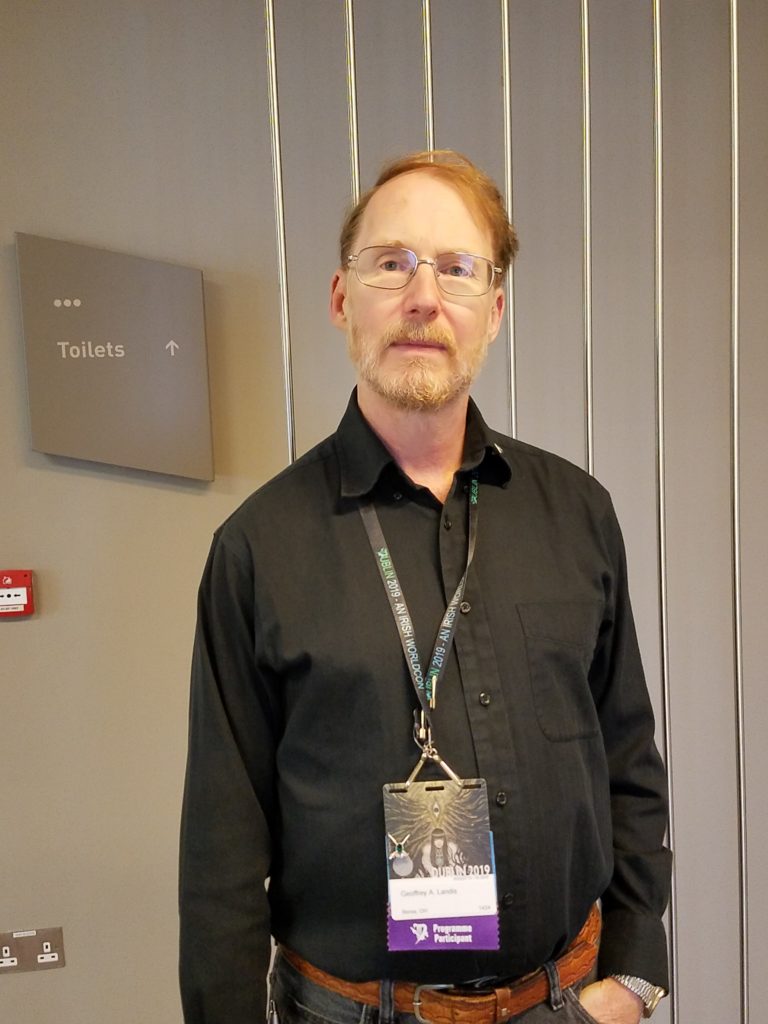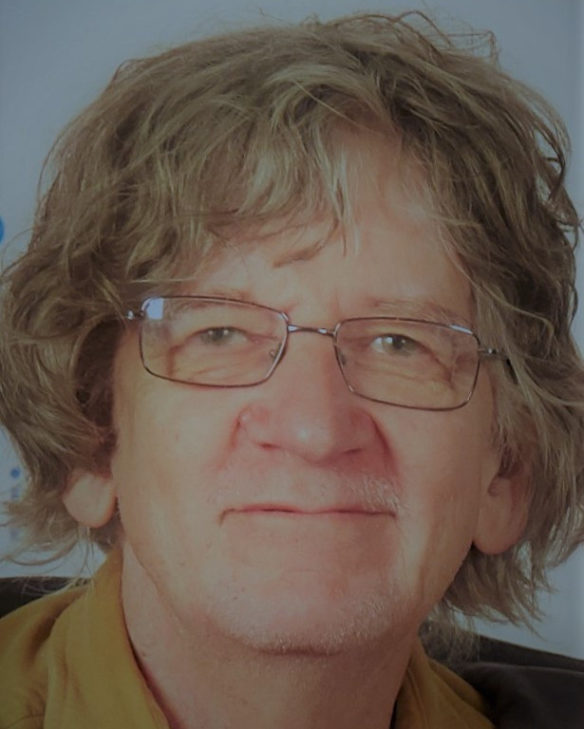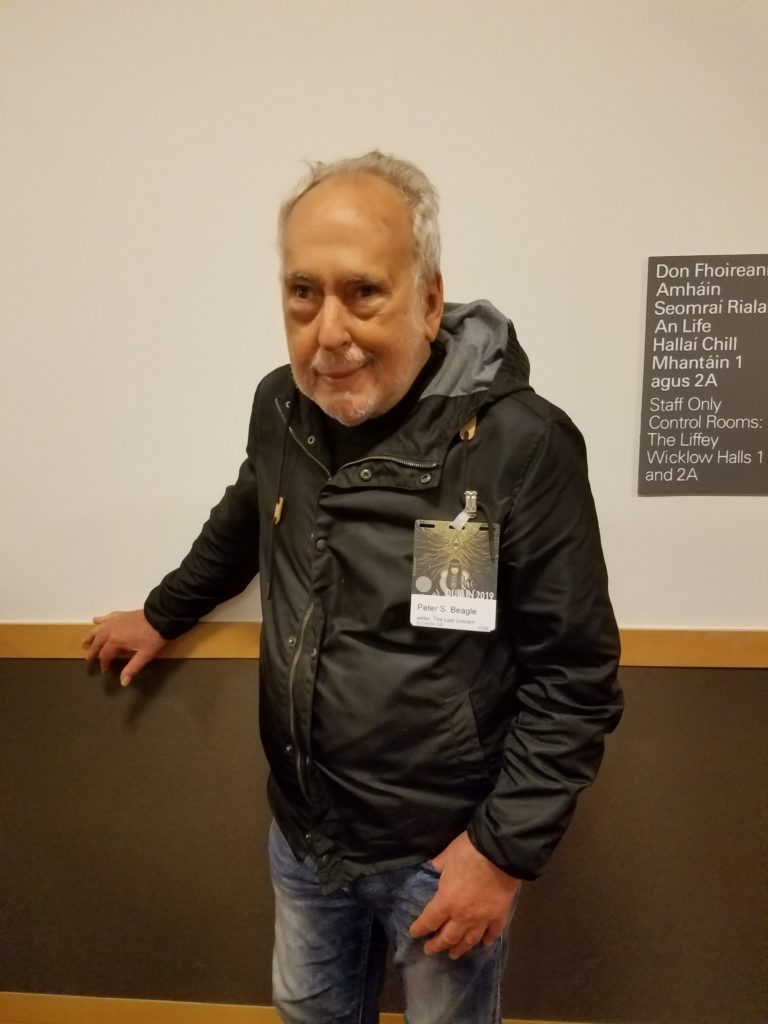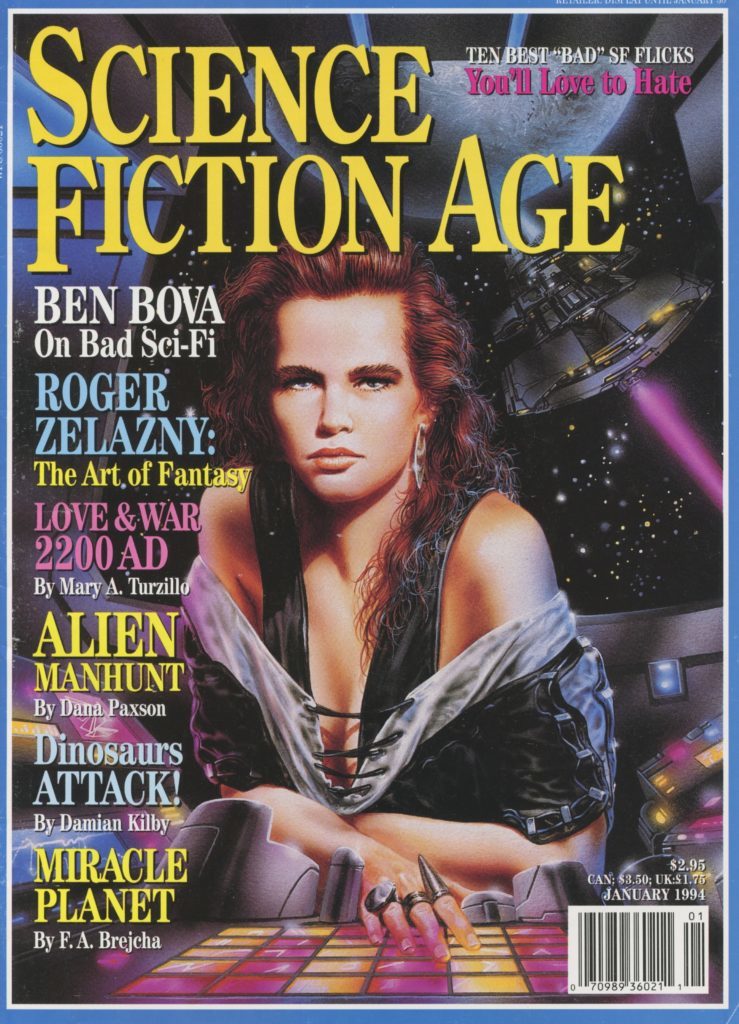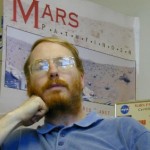(1) FREE CLIMATE CHANGE SF ANTHOLOGY. Twelve stories from the Climate Fiction Short Story Contest are collected in Everything Change, a new fiction anthology from Arizona State University’s Imagination and Climate Futures Initiative (ICF). Kim Stanley Robinson wrote the foreword, and there is also an interview with Pablo Bacigalupi.
In the midst of Earth’s hottest year on record, the effects of climate change are more apparent than ever. But how do we come to grips with the consequences on the ground, for actual people in specific places? New York Times bestselling science fiction author Paolo Bacigalupi believes the answer lies in fiction: “Fiction has this superpower of creating empathy in people for alien experiences. You can live inside of the skin of a person who is utterly unlike you.”
The anthology includes the grand prize winner of the Climate Fiction Short Story Contest, “Sunshine State,” a quasi-utopian disaster story set in the Florida Everglades. The story’s authors, Adam Flynn and Andrew Dana Hudson of Oakland, CA, will receive a $1000 prize, and four other prizewinners will receive book bundles signed by Bacigalupi. The contest received 743 submissions from 67 different countries and from more than half of the states in the U.S.
The title Everything Change is drawn from a quote by Margaret Atwood, the first Imagination and Climate Futures lecturer in 2014.
The book is free to download, read, and share in PDF, EPUB, and MOBI formats at the Imagination and Climate Futures website, and at the Apple iBooks store and the Kobo store.
Table of Contents:
- Kim Stanley Robinson, Foreword
- Manjana Milkoreit, Meredith Martinez, and Joey Eschrich, Editors’ Introduction
- Adam Flynn and Andrew Dana Hudson, “Sunshine State”
- Kelly Cowley, “Shrinking Sinking Land”
- Matthew S. Henry, “Victor and the Fish”
- Ashley Bevilacqua Anglin, “Acqua Alta”
- Daniel Thron, “The Grandchild Paradox”
- Kathryn Blume, “Wonder of the World”
- Stirling Davenport, “Masks”
- Diana Rose Harper, “Thirteenth Year”
- Henrietta Hartl, “LOSD and Fount”
- Shauna O’Meara, “On Darwin Tides”
- Lindsay Redifer, “Standing Still”
- Yakos Spiliotopoulos, “Into the Storm”
- Ed Finn, “Praying for Rain: An Interview with Paolo Bacigalupi”
(2) THE TIMES THEY ARE A-CHANGIN’. The New York Times reports on another history-making moment in the career of this musician: “Bob Dylan Awarded Nobel Prize in Literature”.
Half a century ago, Bob Dylan shocked the music world by plugging in an electric guitar and alienating folk purists. For decades he continued to confound expectations, selling millions of records with dense, enigmatic songwriting.
Now, Mr. Dylan, the poet laureate of the rock era, has been rewarded with the Nobel Prize in Literature, an honor that elevates him into the company of T. S. Eliot, Gabriel García Márquez, Toni Morrison and Samuel Beckett.
Mr. Dylan, 75, is the first musician to win the award, and his selection on Thursday is perhaps the most radical choice in a history stretching back to 1901. In choosing a popular musician for the literary world’s highest honor, the Swedish Academy, which awards the prize, dramatically redefined the boundaries of literature, setting off a debate about whether song lyrics have the same artistic value as poetry or novels.
(3) CALIFORNIA COLLECTIBLES LAW UPDATE. The American Booksellers Association says: “California Collectibles Bill Clarification Expected”.
At press time, Bookselling This Week learned that California Assemblywoman Ling Ling Chang plans to submit a letter to the state legislature stipulating that a new law covering the sales of collectibles does not apply to either general bookstores or author signing events. Chang was the sponsor of the bill. The law requires sellers of signed books and artwork to provide the buyer with a certificate of authenticity (COA) for any item sold for $5 or more.
“While ABA’s reading of the bill matched that of Assemblywoman Chang’s intent in drafting the law — that the law was meant specifically for the collectibles industry to stave off fraud — we are grateful for how responsive Assemblywoman Chang and her staff were to the concerns of booksellers,” said David Grogan, senior public policy analyst for ABA. “It also clearly shows how much of an impact booksellers can have when they voice their concerns to their legislators. We are happy that a clarification is expected to be entered into the record.”
The clarification comes as a direct response to a blog post and subsequent letters from independent bookstores in California. Concerned that some might assume the law applied to general bookstores, Eureka Books in Eureka, Book Passage in Corte Madera, and others opposed the new law, fearing that it would have a negative financial impact on their businesses.
(4) VENUS IF YOU WILL. Here’s a clickbait-worthy headline: “Why Obama may have picked the wrong planet”. And as a bonus, the article quotes SF writer and NASA scientists Geoffrey Landis.
On Tuesday, Obama published an op-ed at CNN laying out his vision (once again) for visiting Mars.
“We have set a clear goal vital to the next chapter of America’s story in space: sending humans to Mars by the 2030s and returning them safely to Earth, with the ultimate ambition to one day remain there for an extended time,” he wrote.
The Obama administration has been pursuing a visit to Mars for years. But Obama may be overlooking an easier target, if the arguments of one NASA researcher (and numerous supporters) are to be believed. While Mars may seem to be an attractive destination, we should consider sending people to Venus instead, these people argue….
You see, Mars is a challenging destination. It’s far away, the gravity is a fraction of Earth’s — posing additional health hazards beyond the lack of atmospheric radiation shielding — and you have to be suited up just to breathe outside.
By contrast, Venus is a lot closer to Earth than Mars is. At their closest points, Venus is only 25 million miles away, compared with Mars’s 34 million miles. The shorter distance means you’d need less time and fuel to get there, reducing the cost. And although Venus’s surface temperature is hot enough to melt metal, and the crushing pressure will squish you like a bug, the upper atmosphere is actually rather habitable.
“At about 50 kilometers above the surface the atmosphere of Venus is the most earthlike environment (other than Earth itself) in the solar system,” wrote Geoffrey Landis, a NASA scientist, in a 2003 paper. Landis has spent much of his career dreaming up ways to make a human trip to Mars actually feasible, so he knows what he’s talking about.
At high altitude, Venusian temperatures are hot but not unbearable, and the barometric pressure drops to the equivalent of one Earth atmosphere. You’d have droplets of sulfuric acid to worry about, but only if your skin is directly exposed.
It helps that NASA has already taken steps to research a manned mission to Venus.
(5) RON MILLER ON SPACESHIPS. Smithsonian.com plugs artist Ron Miller’s new opus from Smithsonian Books in “How Artists, Mad Scientists and Speculative Fiction Writers Made Spaceflight Possible”.
The realization of human spaceflight has long stood as a testament to the power of human temerity, a triumph of will and intellect alike. Pioneers such as Yuri Gagarin, Neil Armstrong and Sally Ride have been immortalized in the annals of history. Their impact on terrestrial society is as indelible as the footprints left by the Apollo astronauts on the windless surface of the Moon.
Perhaps yet more wondrous than the Cold War-era achievement of extraterrestrial travel, however, is the long and meandering trail that we as a species blazed to arrive at that result. Such is the argument of author-illustrator Ron Miller, an inveterate spaceship junkie and one-time planetarium art director at the National Air and Space Museum in Washington, D.C.
Miller’s just-published book, Spaceships: An Illustrated History of the Real and the Imagined from Smithsonian Books, is a paean to the exploratory yearning of humankind across the centuries. The profusely illustrated volume tracks technological watersheds with diligence, but its principal focus is those starry-eyed visionaries, the dreamers….
(6) TOO TANGLED FOR TINGLE? I was wondering what the chances were of Chuck Tingle setting up his own SadPuppies.com site when it’s Hugo season again. But Huge Domains already has that registered and is asking $1,895 for the rights.
Well then, what about SadPuppies5.com? Nope, that’s registered, too, by a proxy that contains a reference to the real Sad Puppies site, SadPuppies.org – have they been thinking ahead?
Of course, if Tingle wanted to make a File 770 reference, he could always start up SadPuppiesSecond5th – and that would be fine by me.
(7) VULICH OBIT. Special effects make-up artist John Vulich died October 13. Dread Central recalls:
Vulich worked on some of the horror genre’s most classic films and TV shows such as “Buffy the Vampire Slayer,” George A. Romero’s Day of the Dead, The Dark Half, Castle Freak, From Beyond, Ghoulies, Dolls, TerrorVision, The Texas Chainsaw Massacre Part 2, The Lost Boys, Two Evil Eyes, “The X-Files,” “Angel,” and “Werewolf: The Series” and was one of the founders of Optic Nerve Studios.
(8) TODAY’S BIRTHDAY BOY
- Born October 13, 1957 — Chris Carter, creator of “The X-Files.”
(9) FIFTH NEWS IS BEASTLY. We’re always on the lookout for news items featuring the number five. I may run only about 10% of them, but Tor.com broke through with “J.K. Rowling Confirms There Will Be Five Fantastic Beasts Films”.
At Warner Bros’ global fan event for Fantastic Beasts and Where to Find Them today, the studio made a big announcement: There will be five Fantastic Beasts films total, instead of the trilogy, as originally thought.
(10) SHOCKED, I TELL YOU. In “thoughts on the processing of words” at Text Patterns, a blog on The New Atlantis website, Baylor University English professor Alan Jacobs gives a long review of Matthew Kirschenbaum’s Track Changes: A Literary History of Word Processing, including the revelation that the first author to write a book on a word processor was not Gerrold, Pournelle, or Crichton, but historical novelist Gay Courter.
In any case, the who-was-first questions are not as interesting or as valuable as Kirschenbaum’s meticulous record of how various writers — Anne Rice, Stephen King, John Updike, David Foster Wallace — made, or did not quite make, the transition from handwritten or typewritten drafts to a full reliance on the personal computer as the site for literary writing. Wallace, for instance, always wrote in longhand and transcribed his drafts to the computer at some relatively late stage in the process. Also, when he had significantly altered a passage, he deleted earlier versions from his hard drive so he would not be tempted to revert to them.
(11) LACKING THAT CERTAIN SOMETHING. IGN’s’ video interview with the actor reveals “Why George Takei Doesn’t Like the New Star Trek Movies and the Old Animated Series”.
Mr. Sulu explains why he doesn’t like the Star Trek cartoon and reveals the magic ingredient he believes the new films are missing. The Star Trek 50th Anniversary TV and Movie Collection Blu-ray Boxset is out now.
(12) WELLS MEETS SOLOMON. Richard Chwedyk’s “Teaching Stuff: Vast and Cool and Unsympathetic” at the SFWA Blog tells about a fascinating exercise:
Here’s an assignment I give my students:
They receive a copy of the first chapter of H. G. Wells’ War of the Worlds.
It is roughly 2,250 words.
I tell the students that Mr. Wells has just received a note from his editor. “Great stuff, Herbie, but you go on too long here. Cut this first chapter in half.”
How to make 2,250 words into 1,125 words?
Mr. Wells, alas, has passed on. Fortunately for us, so has the novel’s copyright.
…Ask students to do this to their own stories and their faces turn ashen. Their babies? By half? What madness is this?
So by practicing at first on Wells, they can see what the process entails before going on to apply the knife to their own deathless prose. The exercise not only requires careful editorial skills, but an equally careful reading of the text. What’s important in the telling? What’s icing on the cake?
(13) DEEP READING. Connie Willis, in an article for Unbound Worlds, discusses her new book Crosstalk – “Connie Willis Wants You to Think Twice About Telepathy”.
What led me to write Crosstalk? Oh, lots of things. For one, like everybody else, I’ve always been intrigued by the idea of telepathy and have often thought how nice it would be to be able to tell what other people were thinking, to know if they were lying and how they really felt about you. For another, I live in Colorado, home of the infamous Bridey Murphy, who started the whole channeling-past-lives thing back in the fifties by claiming she’d had a previous life in nineteenth-century Ireland. Which turned out not to be true and which left me with a healthy skepticism of all things paranormal, from psychics to Dr. Rhine’s ESP experiments.
(14) WHAT’S WRONG WITH THINKING OUT LOUD. She also did an interview with The Verge: “Novelist Connie Willis explains why telepathy is a terrible superpower”.
You’ve said many of your stories are about working through arguments with yourself, and working through different aspects of the idea you obsess over. Are you working through an argument in Crosstalk?
Well, looking at the society we’re living in right now, we’re bombarded with information. We have all these new ways of communicating. We can talk face-to-face to somebody in Asia, you can have a best friend who lives across the world. But our relationships don’t seem to be improving radically as a result of all this extra communication.
We’re always looking to technology, thinking it can solve our human problems. Usually it does, but with big side effects we hadn’t counted on. It’s an argument I don’t know how to solve. I’m not suggesting we go be Luddites. But occasionally I’m on panels with all these really gung-ho tech people, and they’re like, “Oh this new development will solve all our problems.” And I think “Anything that solves all our problems will create a whole mess of new problems that would have never occurred to us.” We need to start thinking more in terms of cost-benefit analysis. Maybe that would be more productive.
But mostly with Crosstalk, I just wanted to have fun with the idea of whether communication is a good idea, generally. Not tech communication, communication between people. Most people would say, “We all need more communication in our relationships.” But really, most relationships benefit from all the things we don’t say, all the things we keep to ourselves.
(15) MEMORIES. In a Rue Morgue interview, the actress looks back: “35 years of pleasant screams: an interview with Cassandra Peterson, aka ELVIRA”.
When it comes to the horror genre, there are many icons in the business but none more so than a woman who created a character that has permeated pop culture; her name is Cassandra Peterson and her wonderful, wicked, and hilarious alter ego is Elvira, Mistress Of The Dark. For 35 years, the sexy, dark, and comedic valley girl/gothic goddess has appeared on television, film, pinball machines, comic book covers, record albums, and any other product you could imagine. She is one of the most beloved incarnations in history, and is still surging in popularity to this very day. Peterson herself is now in her mid-sixties but looks like she has discovered the fountain of youth, or made a deal with the devil, she is absolutely beautiful and timeless. Her comedic timing is unmatched, quick fire and quite daunting considering the jokes come straight from her mind like bullets, one of the funniest women alive, hands down. She is also one of the hardest working women in the business, an actress who became her own boss and made her own rules (and still does); truly an inspiration in regard to drive, conviction, and perseverance.
Rue Morgue spoke to Peterson about her 35th Anniversary and her new photo book, entitled ELVIRA MISTRESS OF THE DARK, which is a love letter to her fans, and a testament to her many years as a reigning queen in horror comedy….
(16) ACES AND BAIT. In addition to the news I missed while I was in the hospital, I also fell behind reading Adventures With Kuma. From August — “Dodge City Bear”.
Bears wents to lots of places todays. Boys will writes abouts bigs holes in the grounds laters. Bears gots to plays a games in Dodges Citys withs a nices Doctors nameds Hollidays.
Bears saids, “Bears has fives fishes. Whats yous gots?”
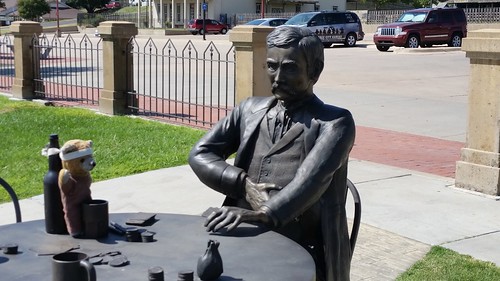
[Thanks to John King Tarpinian, Joseph Eschrich, Bartimaeus, Sean R. Kirk, and Andrew Porter for some of these stories. Title credit goes to File 770 contributing edtor of the day Cath.]

